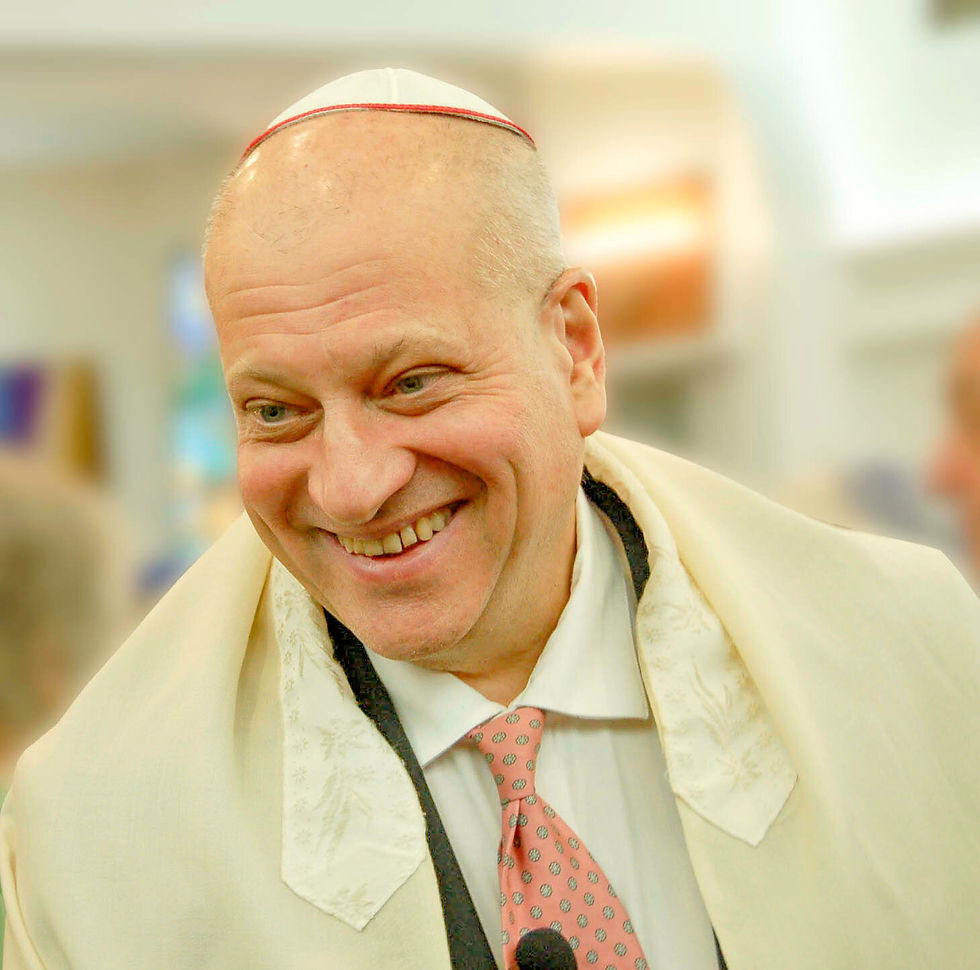Al.com Column on Passover
- danaevankaplan
- Apr 20, 2017
- 4 min read
By Rabbi Dana Evan Kaplan, Springhill Avenue Temple, Mobile

Jews throughout Alabama began celebrating Passover on the evening of April 10th this year. We begin our celebration with a Seder, which means order or arrangement, and is referring to the order in which we conduct we the ritualized aspects of the evening. This is done by reading a Haggadah, a collection of rituals and ceremonies collected by the sages almost two thousand years ago.
The Haggadah includes the demand that each of us see ourselves as having personally come out of Egypt. This is not an easy demand to fulfill. I live in Mobile, Alabama, but I was born in New York City and raised in Waterbury, Connecticut and I certainly want to express my solidarity with people who have been persecuted and even enslaved, but I have no personal experiences on which to draw. Neither did my immediate family; all of the relatives in my immediate family came over from Romania and Lithuania on my mother's side, and the Russian Ukraine on my father's side, in the aftermath of the Kishinev Pogroms, anti-Jewish riots that took place in 1903 and 1905.
While this frightened them enough to leave their homes, jobs and families to travel across the Atlantic ocean to a country they had only heard about, it put them out of harm's way long before horrific slaughter of World War I, and the Nazi holocaust of World War II.
It is a challenge to take this obligation seriously. How am I supposed to feel something that I did not actually experience? This is the leap of faith that Passover demands of us; we are not commanded to believe that these events actually occurred in the precise manner that they are described in the Hebrew Bible.
Religion is not history, and history is not religion.
We do not care if some of the details are wrong, or even if it was created from the Israelites imagination, hundreds of years after the fact. What we are commanded to do is to feel as if we, ourselves had actually been slaves in Egypt. What we are commanded to feel is that we, ourselves, were brought out of slavery, by God and redeemed. This is a religious transformation of the first order, we are going from abject slavery to liberation and freedom, which is euphoric, yet also intimidating. What can make that abstract transformation real is the sensory experience that we aim to recreate.
We need to see, feel and even smell and taste, slavery and the process of redemption and finally the actual exodus. The sensory experience is centered on the Seder plate, which holds food items that symbolize the historico-religious scenario.
There is karpas, usually parsley, which represents the early years of flourishing in Egypt. Joseph had risen from house servant to prime minister, and had brought his brothers to Egypt to settle and live in safety and security. We dip the parsley into salt water to taste the tears that the later Israelites shed when the Egyptians enslaved them.
There is a stinging paradox in the story of how a group was first warmly greeted, then bitterly betrayed and enslaved.
There is also, maror, bitter herbs that can be red or white horseradish. We make a matzah sandwich with the bitter herbs because the matzahs represent our poverty as slaves, as well as the rush that we were in to flee and the bitter herbs inside represent the bitterness of slavery. The Haggadah asks us to make a second sandwich, with maror, matzah and charoset, a sweet mix of apples, nut, wine, honey and cinnamon. The charoset looks like the mortar that the Israelites used to construct buildings as slaves in Egypt.
I never understood why it tasted so good if it was supposed to represent the mortar, we made and used as slaves. Certainly it should be more bitter than the bitter herbs, or at least more bland than the matzahs. Instead we have a paste that may look like mortar, but tastes like spiked fruit salad with nuts and a dash of cinnamon. The answer appears to come from the Song of Songs, the book from the Hebrew Bible that my congregation is going to start studying on our Wednesday night Torah studies, starting this coming week.
According to the Midrash, the Israelite women found an apple orchard where they could take their husbands for a moment of quiet intimacy to counteract the Pharaoh's vicious attempt to stop all future generations. As it says in the Song of Songs 7:12-13, "Come, my beloved, let us go into the open; let us lodge among the henna shrubs. Let us go early to the vineyards; let us see if the vine has flowered, if its blossoms have opened, if the pomegranates are in bloom. There I will give my love to you."
Everything that we do on Passover is designed to help us to feel the experience. To my surprise not all of it is negative, there is definitely that aspect of it, the matzah for example which represents the frantic rush to leave Egypt before the Egyptians changed their minds, the herbs representing the bitterness of slavery, but there is also the sweeter elements such as the charoset, that looks like something negative, but tastes a little bit like future paradise.
The lesson that I draw from this is that you cannot just remember something in an abstract way, to really embed the experience into our collective unconscious we need to recreate tactile and sensory responses that can guide and direct us. We need to take seriously, but not literally, the commandment in the Haggadah, to feel as if we, personally, came out of slavery.




Comments